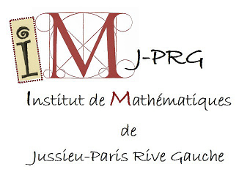| Résume | I will describe joint work with Bruno Premoselli, in which we construct new examples of Einstein metrics on compact manifolds. They are seemingly the first compact examples of negatively curved Einstein metrics which are not just locally homogeneous. The metrics are found on a family of 4-manioflds constructed by Gromov and Thurston in the 1980s. The starting point is a certain sequence of hyperbolic 4-manifolds, each containing a totally geodesic surface which is nulhomologous. Moreover, the normal injectivity radius of goes to infinity with k. For a fixed choice of l, we take the l-fold cover over branched along . We prove that for all large k, carries an Einstein metric. The proof is in two parts. Firstly we find a metric on which is close to Einstein. This is done by using a model Einstein metric near the branch locus. Our model is asymptotically hyperbolic and so matches at large distances from the branch locus with the pull-back to of the hyperbolic metric on . Interpolating between these gives a metric which is close to solving Einstein’s equations. The second part of the proof is to perturb this metric (for all large k) to find a genuine Einstein metric using the inverse function theorem. This involves a delicate interplay between L² coercivity estimates and weighted Hölder estimates. |

